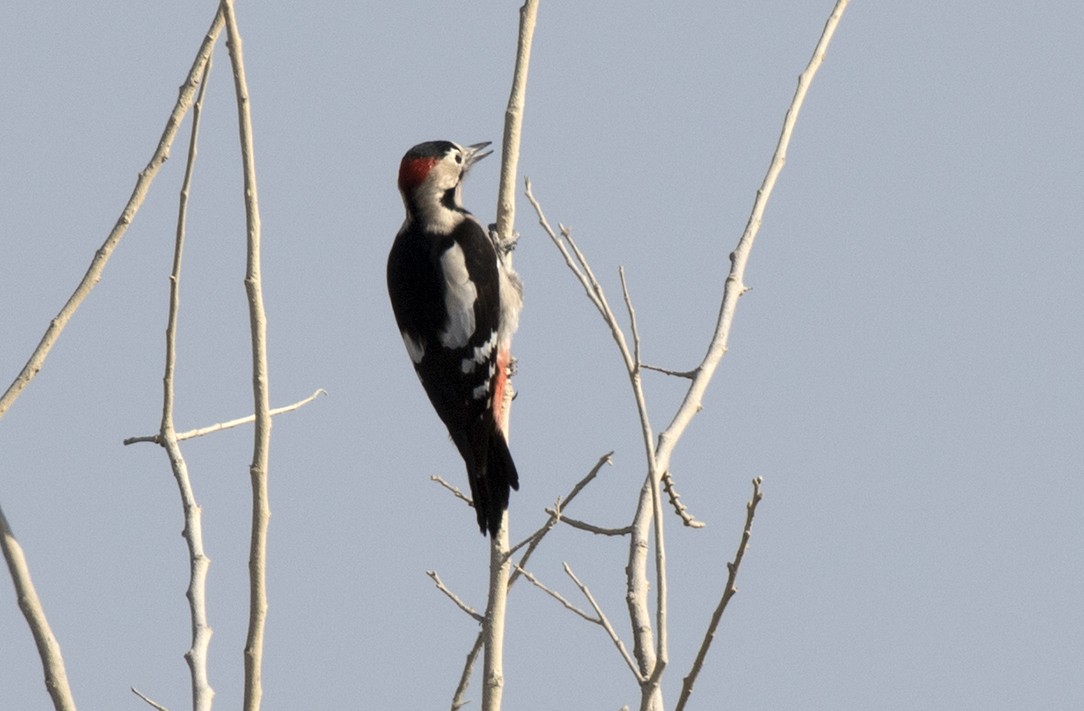Syrian Woodpecker
A species of Eurasian Pied Woodpeckers Scientific name : Dendrocopos syriacus Genus : Eurasian Pied Woodpeckers
Syrian Woodpecker, A species of Eurasian Pied Woodpeckers
Botanical name: Dendrocopos syriacus
Genus: Eurasian Pied Woodpeckers
Content
Description General Info
 Photo By Zeynel Cebeci , used under CC-BY-SA-4.0 /Cropped and compressed from original
Photo By Zeynel Cebeci , used under CC-BY-SA-4.0 /Cropped and compressed from original Description
The woodpecker is 23 cm long, and is very similar to the great spotted woodpecker, Dendrocopos major. The upper parts of the male are glossy black, with a crimson spot on the nape and white on the forehead, sides of the face and neck. On the shoulder is a large white patch and the flight feathers are black with white spots forming three wingbars. The three outer tail feathers show only a few white spots; these show when the short stiff tail is outspread, acting as a support in climbing. The under parts are buffish white, the abdomen and under tail coverts reddish. The long bill is slate black and the legs greenish grey. The female has no crimson on the nape, and in the young this nape spot is absent, but the crown is crimson. It differs from the smaller lesser spotted woodpecker by the crimson on the abdomen. It is much harder to distinguish Syrian woodpecker from great spotted woodpecker. Syrian has a longer bill, has more white on the head, and lacks the white tail barring of great spotted. 
Size
23 cm
Colors
Black
Red
Gray
White
Life Expectancy
10.83 years
Nest Placement
Cavity
Feeding Habits
Syrian Woodpecker consumes primarily insects boring into wood, like moth larvae and beetles, and occasionally bees. Utilizing a sticky tongue, it extracts prey from bark crevices while ascending trees in a jerky, hop-like motion. It supplements its diet with seeds, nuts, and berries when needed, and can forage in upside-down positions.
Habitat
Syrian Woodpecker occupies open woodlands and cultivated areas with plentiful trees and shrubs, especially favoring environments with old trees for feeding and nesting. Its habitat spans southeastern Europe to Iran, including mixed, oak, and montane forests, as well as coniferous forests at lower elevations, and adapts to agricultural environments like olive orchards and vineyards. This species is also found in urban green spaces and ranges from lowlands to altitudes up to 2700 meters.
Dite type
Insectivorous
General Info
Feeding Habits
Bird food type
Distribution Area
The woodpecker is a resident breeding bird from southeastern Europe east to Iran. Its range has expanded further northwest into Europe in recent years. It is an inhabitant of open woodlands, cultivation with trees and scrubs, and parks, depending for food and nesting sites upon old trees. It is often an inconspicuous bird, in spite of the plumage. 
Species Status
Not globally threatened.